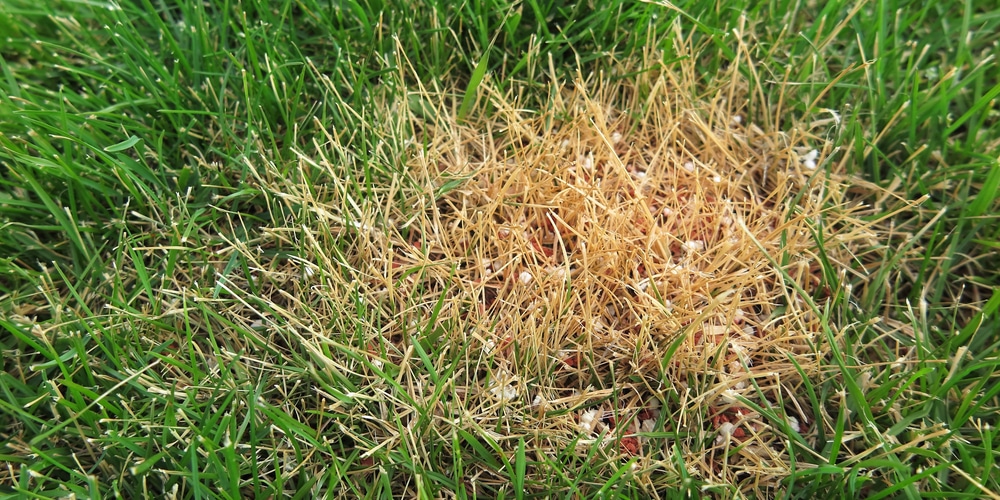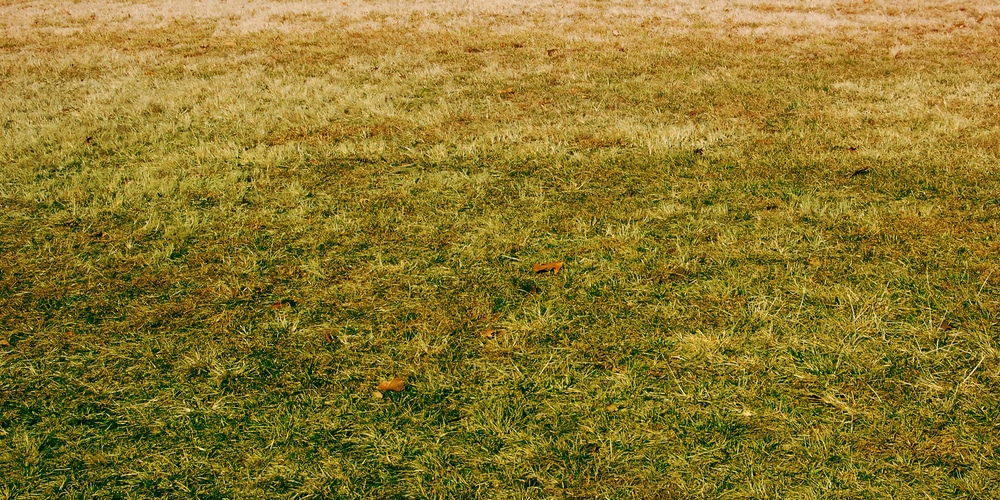If you’ve recently fertilized your grass, only to find that it’s turned yellow, you likely used too much fertilizer. Overfertilization can damage your lawn, causing the grass to turn yellow or brown. In the worst cases, an overfertilized lawn may die. The wrong types of fertilizers can also cause your yard to turn yellow.
The good news is that there are many things you can do to save your lawn. Let’s look at why grass turns yellow after fertilizing and what you can do to improve the condition of your yard.
Why Grass Turns Yellow After Fertilizing
Overfertilization will cause a build-up of chemicals on your lawn, which can easily burn the grass. This is a common problem that’s most likely to occur when synthetic fertilizers are used on hot summer days. If your lawn begins to turn yellow soon after applying fertilizer, this indicates that you’ve used too much.
Chemical fertilizers often contain high levels of nitrogen salts. When too much fertilizer is used, these salts build up in the soil and become toxic to plants. They can also burn the leaves of your grass, which is known as leaf scorch.
Other signs that you’ve over-fertilized your lawn include yellowing grass blades that begin at the base. You may also notice that the grass blades have started turning brown at the top. Your lawn’s growth is likely to have slowed down, and there may be a fertilizer crust present on the surface of the soil. If you’ve accidentally spilled some fertilizer on your lawn, this will also cause fertilizer burn and kill the patch of grass that’s affected.
The best fertilizers to use on lawns contain a mix of nitrogen, phosphorus, and potassium. These nutrients help the grass to grow strong rooting systems and look green and healthy. If you’ve used the wrong type of fertilizers, perhaps one that contains soluble salts, your lawn will be more at risk of fertilizer burn.
Saving Your Lawn From Fertilizer Burn

If your lawn was healthy before it was over-fertilized, it will likely bounce back with the correct care and attention. Before trying to revive your lawn, you should determine whether your grass is still alive or whether it has died completely. Look at some of the individual grass blades. If they are yellow or have yellow and brown steaks, this is a sign that your lawn will recover. If, on the other hand, the grass is entirely brown and feels dry and crunchy, you’ll likely need to replant your lawn.
To save your lawn after it turned yellow from fertilizing, you should water it regularly and generously. This will help wash away excess fertilizer and allow your grass to regain its health and get back to a healthy green color. It’s a wise idea to water your lawn as soon as you realize you’ve over-fertilized or notice the yellowing of grass blades or brown patches. If you slowly soak your lawn by increasing irrigation, the excess salts will be flushed from the soil. Watering your lawn daily for a week should help to improve its condition. It’s best to water your lawn in the morning before the hot sun causes evaporation or further scorches the grass.
After a few weeks of watering, your lawn should have regained its health and turned green again. If there are still brown patches, you can dig these areas up and overseed.
How to limit damage when using fertilizers
When using fertilizer in the future, be careful not to overuse products that contain chemicals. Always follow the manufacturer’s instructions which can be found on the label, and apply the fertilizer in the correct ratio. This will help limit the damage. Slow-release fertilizers will also reduce the risk of burning.
You may like to consider an organic fertilizer in the future as these are less likely to cause problems.
Conclusion
If your grass has turned yellow after fertilizing, it’s likely you used the product incorrectly, either over fertilizing your lawn or using an incorrect product. Salts in chemical fertilizers can build up in the soil and on the lawn’s surface, causing fertilizer burn. To help revive an over-fertilized lawn, you can increase watering, which will wash away the excess salts.
Related:

